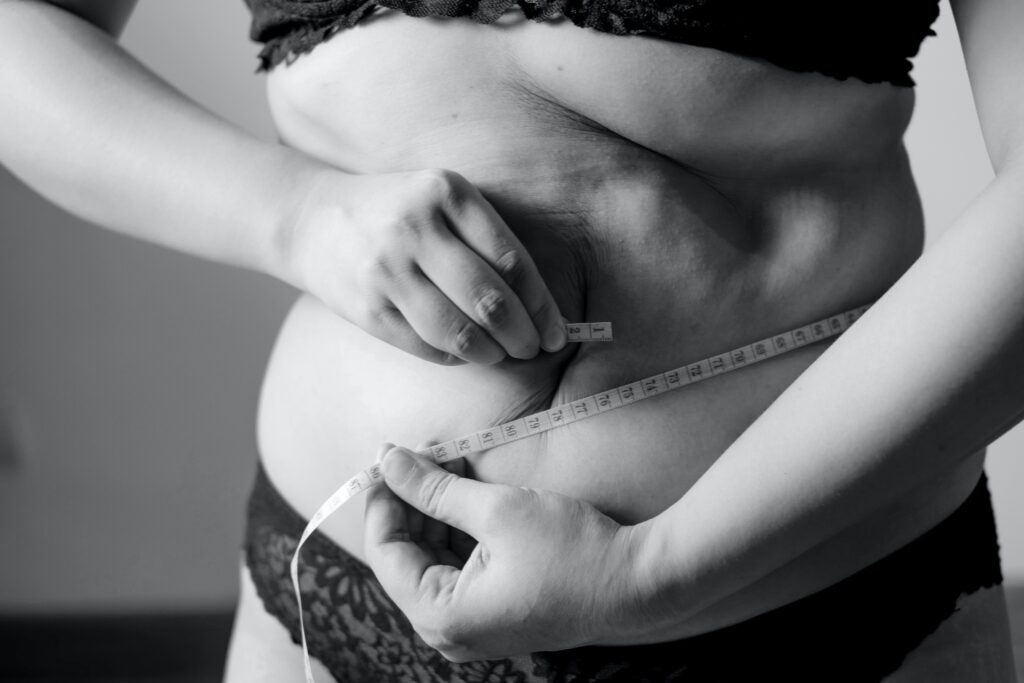News Team member Stephanie Oehler describes how the online "trad-wife" aesthetic fuels the flames of the anti-vaccination movement during the second-largest measles outbreak of the 21st century.
Eating Disorder Awareness and Research Has Neglected Minority Communities
Eating disorder diagnosis and recovery has focused on white populations, but they are prevalent — and under-treated — among minorities.
By Gabriella Salazar
Imagine you struggle with an eating disorder. That is already a source of inadequacy and shame. Now imagine that, when you realize you need help, you discover that your community refuses to acknowledge your condition, believing that eating disorders don’t really exist. That could tip your shame over into devastation. But this is the reality for many individuals in minority communities.
Approximately 24 million people in the United States suffer from an eating disorder, according to the National Eating Disorders Association (NEDA), one of the biggest research organizations in the field. In addition to this, global eating disorder prevalence increased from 3.4 percent to 7.8 percent just in 2022. This is an enormous number, considering the longterm effects and increased mortality risks that come with eating disorders.
While eating disorders have been recognized as a public health issue for some time, yet the nutrition and dietetics community offers a minuscule amount of diversity. Historically, eating disorders have been believed to only affect white women, but the risk factors, stereotypes, and stigmas associated with minority populations regarding weight, body image, and dieting prove this to be misguided. Yet, according to a 2020 NEDA publication and the 2021 Academy of Nutrition and Dietetics Compensations and Benefits Survey, minorities are not only more likely to have disordered eating patterns but they are also highly unlikely to seek help or to be diagnosed with an eating disorder at all.
This disparity makes it increasingly difficult for minorities with disordered eating habits to ever realize that there is a problem and to get the help they need. To add to this, many minority cultures perpetuate the narrative that eating disorders are not a real or serious matter, and, therefore, they should not receive attention.

Photo by Diana Polekhina on Unsplash
Prevalence the same across races and ethnicities
In a 2018 peer-reviewed study of high school and college students, researchers examined ethnic differences, eating disorder diagnoses, and risk factors. Researchers recruited female high school and college students for health prevention groups. The participants were evaluated for body image concerns and feeding habits, and scanned for potential disorders. Individuals who met the threshold criteria for having an eating disorder were then followed for 3 years. The study found statistically significantly higher rates in Hispanic Americans of three of the four eating disorders laid out in the Diagnostic and Statistical Manual of Mental Disorders, 5th Edition: anorexia nervosa, bulimia nervosa, and binge-eating disorder. Researchers reviewed156 tests comparing white American, Hispanic American, Asian American, and African American populations, finding that across all races, eating disorder rates were relatively similar, affecting between 19.8-21.5 percent of the study population.
In grouping and generalizing all people with eating disorders together, we lose sight of the grave impact that they have on the lives on individuals who are suffering through an eating disorder, individuals who have gone through recovery, and individuals questioning why so much of their time and energy is spent obsessing over food. Marna, an Emory University undergraduate (that is not her real name), shared her eating disorder experience, her recovery process, the vitality of having a support system, and the cultural implications that she faced growing up in a biracial Danish/Indian household.
Growing up, Marna has always seen herself as a high achiever: the bright, charismatic, smart, funny young woman whom everyone knew and loved. When asked about her upbringing and how it affected her recovery and journey to seek help, Marna said that, initially she was “completely under the impression that mental illness wasn’t real”. She says it wasn’t until “I had to face it myself because I suddenly realized that no part of it was a choice.” Like so many others, she found that the recovery systems and programs were framed to support her white counterparts. While Marna recognizes that her family could not always be there the way she needed them, she felt that her parents provided the emotional, financial, and social support system that she needed during her recovery.
Marna also openly discussed the power of saying things aloud. “It puts things into perspective,” she said, “and helps you realize that, at the end of the day, you are more than just a diagnosis”.
There is immense power in talking about your disordered eating habits and allowing yourself to free the thoughts from the constraints of your own mind. Many Black and brown communities are faced with added layers of adversity and believe that if you don’t say it, it isn’t true. Marna recalls an interaction with her Indian grandmother, who she knows loves her deeply — but “treated a sprained pinky more seriously than my eating disorder.” During her recovery, Marna had to make the decision to take the space for herself and distance herself from family members who didn’t support her recovery.
Something lies beneath every person’s eating disorder, whether it be trauma, sadness, or control. Without getting the adequate help and support necessary, it is highly unlikely that anyone can develop the coping strategies to healthfully move on with their life and put their eating disorder behind them for good.
Lack of awareness in minority communities
If there is no significant difference in prevalence of eating disorders across ethnic groups, why is it that we as a society only envision young white girls as the target population? What happens to Black and brown girls like Marna who are forced to suffer in silence? The answer is not what we as a society would like it to be. It is clear that we must adapt existing public health interventions to adapt to the cultures of Black and brown communities. As things stand, entire racial and ethnic subgroups have been excluded from outreach programs. Future prevention programs should be tailored for the entire target population, and people suffering from eating disorders should never be forced to conceal their eating disorder for fear of cultural insensitivity.
A 2013 randomized control trial comprising 663 university students investigated how racial/ethnic stereotyping affects the recognition and referral of eating disorders. Historically, the prevalence of eating disorders in diverse populations has been dismissed due to limited research and inconsistent methodology. However, this study concludes that there is undoubtedly a presence of eating disorder presentation across all racial and diverse ethnic groups. Similar to the 2018 peer-reviewed study, researchers found a higher prevalence of anorexia nervosa and binge-eating disorder in Hispanic/Latina women. In addition to this, the study found that African Americans are least likely to receive an eating disorder diagnosis than any other subgroup.
While the 2013 study concludes that both sexes and all ethnic/racial groups experience eating disorders, the authors attribute lower diagnosis and treatment rates to several factors: clinical presentation appears different and is captured differently in brown and black populations; different ethnic groups often experience barriers to treatment accessibility; and both the individual and clinician are less likely to believe that ethnic minorities suffer from eating disorders.

Whether we choose to believe it or not, our cognitive bias is heavily influenced by existing social paradigms of health and medicine. And when it comes to eating disorders, this paradigm does not often encompass the treatment of Black and brown communities. In addition to this, there exists clinical biases that could make clinicians less likely to believe minority individuals suffer from an eating disorder.
Brittany Veras, a registered dietician specialized in disordered eating, says, “It will always be something until we as a culture are in a different place with our expectations of our bodies.” While eating disorders can affect people of any sex, women are 1.75-3 times more likely to suffer from an eating disorder than men, and Black and brown women simply have a different body type than their Caucasian counterparts. With a proven 4-7% BMI adiposity (body fat percentage) discrepancy between white women and Black/brown women, misdiagnosis is inevitable.
In Western society, Veras says, “There exists a desperation to have more control over body composition. Given that society-wide beauty standards are based on and reinforced by white women, Black and brown women are at increased risk of relying upon disordered eating patterns to achieve those impossible ideals.
Dr. Jean Welsh, child nutrition expert at Emory University, says it’s important to pay attention to childhood eating habits as early as possible. “We think of kids as being very pliable, and, whatever happens, they’ll grow out of it”, she says. “We’re seeing that doesn’t really happen. Kids can become metabolically unstable through lifestyle, and are at a high risk of staying that way for the rest of their lives.”
At the end of the day, we must ask ourselves, regardless or racial or ethnic background: “How much autonomy do we truly maintain? And how much do we truly consider the influences of our day-to-day lives?”
An organization founded in Atlanta, Georgia is seeking to do just that. Diversify Dietetics supports minorities entering the nutrition community. Their goal is to increase racial and ethnic diversity in the field by empowering leaders of color. They also sponsor educational and outreach programs in Black and brown communities with programming including local meetups, registered dietician mentorship programs, professional development workshops, educator workshops, and podcasts busting common nutrition myths.
Eating disorders have historically been viewed as something that only affects white women, that is true. But we now know this is not and never has been the case. Eating disorders do not discriminate. So, treatment plans, public health interventions, and educational programs shouldn’t either.

